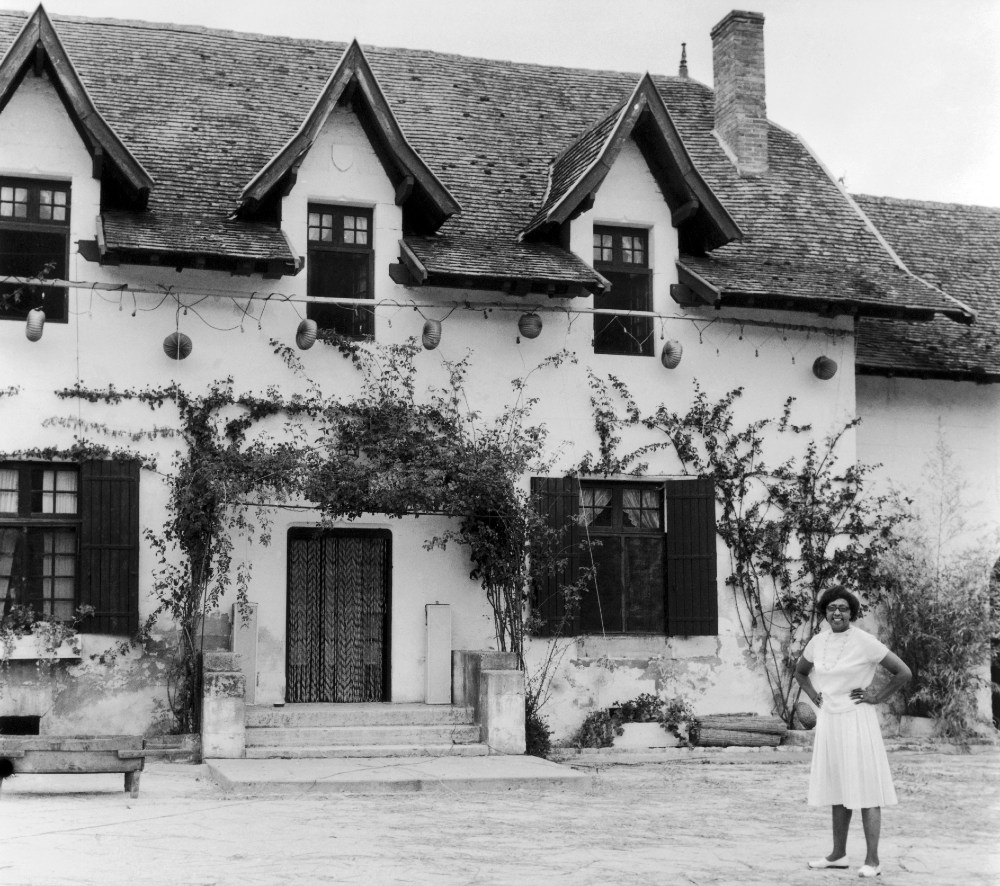Visitors will be struck as they arrive at the château in the Périgord Noir region. The layers of early-morning mist still hang over the tall towers, designed in fifteenth-century Renaissance and Gothic styles. The gargoyles leer down while eagle owls hoot hauntingly from their aviaries. Suddenly, the sun comes out and a breeze begins to blow, dissipating the rural haze to reveal a spectacular view over the Dordogne Valley. The windows open and a recording of Josephine Baker’s velvet tones rings out, singing of her two loves. As if to say: “Welcome, make yourselves at home!”
In 1936, Josephine Baker, a music-hall superstar in France, had just finished a year-long tour of the United States. While aboard the Normandie, the renowned luxury ocean liner bringing her back to her adoptive home, she met one of the former owners of the Milandes. She visited it soon after and fell instantly in love. Hoping to escape the chaos of Paris, she purchased the château a year later. She spent thirty-two years in this impressive dwelling, which she nicknamed “the Sleeping Beauty Castle,” followed by “the Village of the World.”


Stage Costumes and Personal Archives
The estate currently offers several activities, including demonstrations with birds of prey, ornithology workshops, and walks through the magnolia-filled gardens. But the museum honoring Josephine Baker is what really draws the crowds. Each of the château’s rooms reveals another part of the singer’s personality. The visit starts with the best-known aspect, that of the sensual, subversive artist who swayed her banana loincloth to the Charleston in the Revue nègre show in Paris. The renowned belt (“the most famous costume in show business,” according to the museum label), is presented like a relic in a glass case. The next outfits reflect Josephine Baker’s Roaring Twenties. Visitors can admire a short, white skirt with suspenders decorated with white tulle petals, a tiara topped with peacock feathers, and a coral-red silk taffeta kimono. And, of course, the countless objects depicting the public’s frenzy for “the Black pearl,” including newspaper clippings, show posters, and spin-off products (“Bakerskin, the lotion that darkens the skin!”).
What would an ultra-wealthy star be without an extravagant bathroom? Josephine Baker was no exception, and wanted hers to be inspired by the box of her favorite perfume, Arpège by Lanvin. The ceiling was painted in gold leaf, while other surfaces were clad in Murano glass mosaics, and the taps were gold-plated. Designed in 1950, the bathroom is inspired by the artist’s beloved Art Deco movement. Yet her future financial ruin was almost literally written on the wall. The singer was too generous, unable to manage her money, and supposedly paid the unscrupulous artisans three times. The visit continues to the Resistance Room, set under imposing oak beams dating back to the fifteenth century. The archives exhibited describe Josephine Baker’s efforts to help the Allies during World War II. Far from simply singing in support, from 1940 onwards she actually allowed the region’s Resistance fighters to hide weapons in the cellars of her château.



The Mother of a “Rainbow Tribe”
As well as being a dancer, a freedom fighter, and an antiracist activist, Josephine Baker was also a loving mother – a side of her portrayed in her children’s bedrooms. After several miscarriages, and desperate to prove that the human race was the only real race on earth, she and her French husband Jo Bouillon adopted twelve children of different nationalities and religions. This is the least-known aspect of her life. Archive photos take visitors behind the scenes of this unique family to show how loving the singer really was. She was also said to be close with local farmers, enjoyed tending her vegetable garden, and cared deeply about her children’s education. She created a transport service to help them get to the local public school, which she extended to every child in the valley. Each member of the tribe also had a private tutor who taught them about the culture of their native county.
The château’s vast kitchen, which could seat up to eighteen guests, depicts the sad decline of the Milandes, including financial ruin, the separation of the “rainbow” family, the lengthy legal battle to retain custody of her children, and the auction of the estate, which was sold for a fraction of its actual value. A large photo shows Josephine Baker after her eviction in 1969, sitting on the front steps and refusing to leave her home. Throughout the museum, this is the only image where she isn’t smiling.
Article published in the November 2021 issue of France-Amérique. Subscribe to the magazine.












